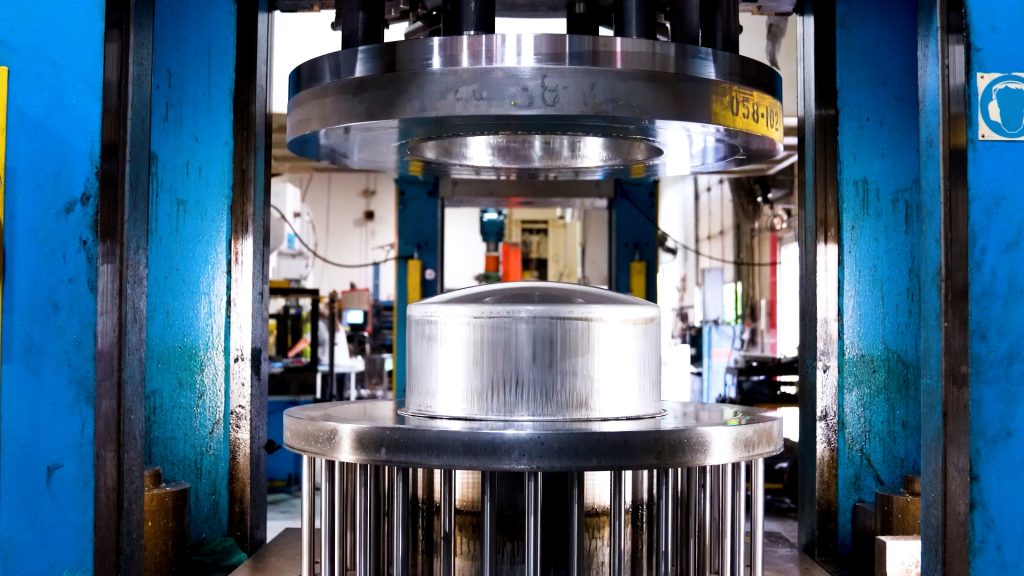The Difference of Deep Drawing and Press Forming
It is commonly misunderstood that Deep Drawing and Press Forming are two different processes. Many do not know that deep drawing is a type of press forming! Press forming as, a broad term, involves drawing a sheet of metal into a specific shape using hydraulic or mechanical power. Press Forming encompasses not only deep drawing but also hydroforming and stamping, all of which are services offered at TMS.
Press forming metals may include: bending, folding, stretching, or thinning to form the metals into different shapes.
Deep Drawing involves creating three-dimensional shapes, such as cylinders or domes, from a flat sheet of metal. This shape is formed by pulling the sheet into a forming die with a punch. Deep drawn shapes typically have a volume and can be very complex.
Common products formed from deep drawing and press forming include pharmaceutical containers, automobile parts, Food Processing Equipment, Lighting, Bulk Handling Equipment, and more.
What is a Deep Drawing Press?
The standard deep draw press is built on four posts, which allows for tooling accessibility, as well as easy access for inserting blanks and removal of the final drawn product. At Toledo Metal Spinning, our presses are equipped with vertical action drawing, meaning that the shape is formed in one downward or upward motion of the press. This saves time, energy, and money, not to mention that the draw is performed with extreme accuracy.

At TMS, we have two AP&T hydraulic presses, each equipped with Human-Machine Interfaces. This allows for our press operators to change the pressure, stroke, dwell time, and other specific functions with a quick push of a button.
Advantages of Deep Drawing and Press Forming
At TMS, we have been utilizing our presses for decades, and they have become an integral part of our processing capabilities. We appreciate that our Deep drawn our deep drawn cups, pans, domes, and lids are always very high quality, and our tolerances stay extremely accurate.
Press forming can be highly repeatable and used to quickly manufacture a batch of parts, while being very cost-effective. Running our presses is a great way to capitalize on time saving and efficiency, as opposed to manufacturing them on a lathe or in our welding cells. Our presses can handle drawing thousands of parts a week, if needed!
Greater depth and more intricate configurations can be achieved when the deep draw and spin processes are combined with each other. Each deep drawn part starts with a laser cut blank, which we do in-house at TMS. Our laser cutting technology allows for a burr-free blank that is cut with extreme accuracy. The blank is oiled and inserted into the press. Our advanced draw/spin technology and combination enables us to achieve shapes and configurations beyond the reach of traditional metal spinning methods. Thin parts that are Deep Drawn can be very durable with a very consistent high quality. This distinction positions TMS ahead of others and gives us an advantage, as many metal spinning houses do not have the capability of deep drawing.
Disadvantages of Deep Drawing and Press Forming
The deep drawing process is not as sufficient for small runs due to high tooling costs.
Depending on the profile of the part being formed, manufacturing the tooling typically requires additional time and expense.